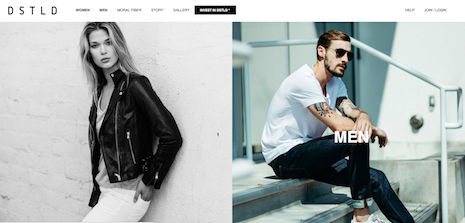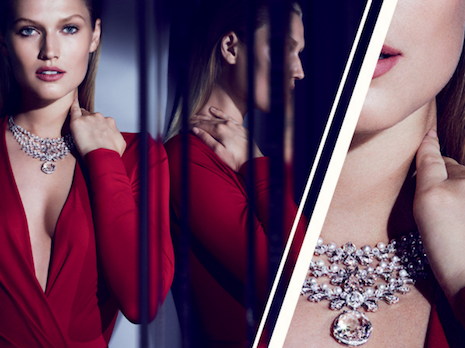By Pam Danziger
The latest news cycle has revealed chasms growing in the land of luxury:
- In late-July, LVMH, home of the storied Louis Vuitton brand, reported that first-half 2016 sales of its flagship fashion and leather luxury goods segment dropped 0.8 percent from same period last year
- Then, on the cusp of New York Fashion Week, Tim Gunn took the fashion industry to task for ignoring the needs, desires, sizing and plentiful dollars of real women, in favor of 6-foot-tall, size 0 “glamazons” in an op-ed piece for The Washington Post
- On Sept. 12, The Wall Street Journal reported the “latest sign of persistent weakness in the luxury-watch sector, which accelerated earlier this year,” on news that Swiss watch exports have declined drastically in 2016
- Bloomberg followed with news that “Gloom Descends on Luxury-Goods Industry” as Hermes cut its 2016 growth forecast and Cartier parent Richemont announced first-half earnings expected to decline by 45 percent
- And Fast Company just published a long-read investigation into the decline of such stalwart American brands as Tommy Hilfiger, Calvin Klein, Coach, Michael Kors and Donna Karan, with a look at how new emerging brands such as DSTLD, Everlane, Cuyana, AHAlife, 1Atelier and Vineyard Vines have captured attention of the next-generation luxury customer. The fall of Ralph Lauren’s title as luxury leader in the United States gets special emphasis
 DSTLD wisdom
DSTLD wisdom
Zip, nada
That the Ralph Lauren brand has lost its luxe is no news to me, after a recent shopping experience.
I ordered an empire waist dress from the company, which was delivered without a side seam zipper. Admittedly, it was not a dress from its high-end range, but it was not cheap either and I ordered it online, so I was not aware that this essential detail was missing.
Every woman knows that a zipper is an absolutely essential detail, dare I say luxury, for getting into and fitting in this style of dress.
But the company chose to cut corners and save manufacturing costs at the expense of customer comfort and satisfaction.
That killed the Ralph Lauren brand for me.
The essential problem now for luxury brands is that they have forgotten that the customer – and not the brand, its designers and its executive team – are the final arbiters of what luxury is. They have opted for beautiful, aspirational luxury branding, the smoke-and-mirrors of marketing.
Luxury brands tell a luxury story that fits their image and ideal, not one designed and focused on the customer. But now the Internet has pulled the curtain back and exposed the ugly underbelly of these luxury brands – and it is not pretty. The reality does not live up to the image and that is now a fatal, brand-killing flaw.
 Cartier Magicien high jewelry collection
Cartier Magicien high jewelry collection
So what is a luxury brand to do?
Luxury brands need to calibrate around the customer, their needs and desires, and recognize that the affluent customers they target have the power and ability to buy what they want, when they want it and are willing to pay when the value is there.
But often now the value is being forsaken, and all the while the prices keep going up and up. Here is my prescription:
Research your brand’s customer and target customer
I know most luxury brands believe they do plenty of market research, including Big Data dives and social media listening.
But no survey or structured data analysis can substitute for asking your customers, and those you aim for, what your brand means to them, what your brand’s luxury value is and how they want it expressed and delivered.
This requires qualitative market research, not surveys, which are best conducted by trained and experienced qualitative market researchers.
Such research can be focus groups, in-depth interviews, in-home and in-store interviews and ethnography.
The answers to what your brand means and what luxury your brand delivers ultimately must come straight from the horse’s mouth – and that is the customer.
Develop system for communications from the shop floor
A much overlooked and ignored resource for gathering the point of view of the customer is right under your nose: the sales associates who daily rub shoulders with the customer. What they hear, what they know and what the customers are telling them needs to be communicated up the chain of command.
Clearly luxury brand executives are most comfortable with top-down communication, but they need to pave a path for bottom-up communications, too.
The sales staff, whose primary focus is selling, is an incredibly valuable resource for customer insights. Use them and listen to them.
Be prepared to tell new stories of luxury
At its core, luxury is a state of mind, not a brand or a price point.
Market research can reveal new insights about what your brand means. The voice of the customer communicated by the sales associates can add understanding about what you are doing right and wrong for the customer.
But those insights will not help if you are not ready to put the findings into action. It may require telling new stories, in new ways to your now and future customers.
Too many old luxury brands are trapped in their traditions and wedded to their old stories that simply do not mean that much to today’s younger, more informed and educated affluent consumer.
It is why emerging new luxe brands such as Shinola, Everlane, Warby Parker and RH are finding a ready audience for their new style of luxury and taking share from the established players.
This does not necessarily mean you have to forsake the qualities and values that made your heritage luxury brand great. But you need to keep examining its roots, pruning and shaping the strategies and the messaging to keep your luxury brand vital and relevant.
TOO MANY luxury brands focus on new marketing and messaging tactics, while ignoring the strategic shifts that need to be made for the contemporary luxury market. That requires putting the customer front and center.
Give them the luxury they really want, need and desire and forget about the luxury you always gave them and think that they still want.
 Pam Danziger
Pam Danziger
Pam Danziger is president of Unity Marketing, Stevens, PA. Reach her at [email protected].
{"ct":"M6+QSC5y9snxmErS3d4EEKTdo+9rLuLUZZ6vwRi3jVQIdLRdqBqzGpki2K+rWKtdBl6yQ8hs7phUl59d\/bmWRO7nHghHhvR2s7jc1+l7\/vxZCL86hAy57SLUeSBsN5qKhGrn+QyReI3CA7\/UIzmMr3ctEqb6J65OLMR6ILSLQ3gMqauFN9VLIO8K30u8eQNT1odeo1VkP24WAy5M2+x8iGKsI5EWhaDobQO4S9yGAyQJGwQ1QYGQTbWUnRRRPLOtEX0Mthb4AurZEWfjDKiaSVRt6zmmnSic4JldEw3jgR1DLJvo1Uk9wf7lZU5fEAWKU9q684vI+fYXrPhQ6QWzxFI+kHFmvHkDUWB30+Fnm5c\/sgWKhyrjHh6GySx\/rHMyYyBeeMi+L+74cdUJYTwQzQoB\/IDBPPuUyM2ySqarMGq0pX2RCU3RobPKscnugJUwbOqNMOjjcVNgYwSYqzPSIFGwb8lePjQTzPH5jvzgN3n\/J7Ih3TlNkXxYhllCymsF\/TeCroRC1Zs8JqH3+AJEDygkFW+YskZxvvOtx1diOFkrjm9zbkBbKX6u52\/qeSfqLgTSsC3fiT4wgTi92zPoVB7gisflaX40iIP9eWmk7F3QK1WayHFvtsuC9bqJg2LEKOYjlCVEgFRWTI7xZRe1\/S5W3C+IK7fobmGvnfIug3VnMIi5hO2wezaGhe6A6DCZtg6Il3w4ocRrM+6p1lcYOVD\/Ghn2NBNFlqFa85Q9lh0rQkPlfRFL+\/KLFnxA+dwJzhCHwUQx4SOIGJIHHdNZw6OeAUMHpDme3Do9PvSyA6pw3uHRzgNAjYov34KXx8XyYILGELBQQe8Bx4raWlHJBKNONLXIaLKWEmVv2V7l0w7du3t4uqoDKcgFMyq1d00oTaIP+8LTIMNPOjbKPAZFyRlvoVZY4WrP\/RyW0ByIyyG1d3kHFMIKHPWDIhaktMaBhjSwQEhzBnjIl1RkEPySr2P7g72B1ZsbupHmRJjjBd48\/dlqjScpTQerS1k21lWGD4rgWrF5vriKzbDaNi+KNn9UncjCIKPHWcuKwFJtO6fhyXJXckf80uQdc3D9\/U7uVICF2fgo3Va4yRIjN+hG7YPfu1pP12U3+E2shbXSdUHh5kkNOJeKn3AGDCf5aB\/EwD8PLCix7OEnyXNVlVaq9lPkPjIbYGRv5ZroIu7+S\/W4WmbChvbA2nDCwLX1WmYj0GumORvwkxeVg017+4eikgtkVoc7B6uu8rx1nflacklXj3\/aPanVXamnXQz5NrZRGxfKkBq2b5nIPTlRaKLIPiZz4zXk\/kWErEIYB8ng59As9tIH2SQmF\/v8jTbSSMdjtHit8uHkGxgVS7B8Bi95WDyd9sVrCr00aNUdRTefxTi9j5yaQqRKLXb5sMFy0EIi7y\/WBItvsTj9rLUmsLZb6kMfv0rQdzfeq7MCD5cIF3VRYilItPPG4A\/dub1gVtNS8EYDskwx+oyGtS9yO+HvQJUrKD+v6TBQ50gYAX4C3RpK0LbZFZ8M0NNFUjw05o0cTV04qTKY+Lcqj6b1+iqtefb4nfsZghlDkovit3zLbLc5vYR2cx8UNwrJCiN0R5dRQMWyb8cQHTOSSLr+LWxm6W1wmLJPW4OoBmO\/4UyidpK3CG6Enu4MYRi4xCCppAM8\/+K4wKNV0UQZPDLrH1jworWrtBrjto50FnUoGb3Xt\/mh7nnTHIsDN\/BKM46OgJt5SXN9+4OnQT4S04ZDeyNYIdjlkTJtzBgZ9SW2Z1DYMDyGDljxk0Fa7QMOnQmovBZ0T5GkJ9dJakLRlrpllNmrdT4FX7ASiGOFoH36ASilSLMXIJlJmjgsbDmzoja2SOMY9nvpd9CSNAtZYIucaI8JQpMu271Wv926q4PLPq1TQe0wv0Tl+r2JHpN6oa4NDbM5dYEFOT1MBTfpaZVZjQeAnOtUyH7wg9MvGcWmd4ODeUsejs\/r9sqS\/+jmH2o06eKoN8DVsssjnv3ZaM9SrgCcL4cCDF0TJG8bHC\/BSmILxSyEgkVdRJij4qPO4JHT1MaCfdYjPBv9MgsXCFZrRPRpUw6F1uatl1vTvEj+vHTIocZ9IbtPHcMsiqW3ylxUA6FEgIZz+Ms0x1yjUIJWBu18\/JnLoOuuPzV\/QqsBcKihAxmOoIeBb48DIM\/QKW7YAJXN2fbgplTuzZALgjVcHNnuZ7mwGJab7zl249R2jYhk2Vxe3W++mU+QQYqxGnRd8hM3hsw\/HwBi7j2DQGHLh7g56GjksQraQ7JzzRvL14i7yzjxhMln95cQMA0ERmuKJ0nSVECk1BnP0Q8rlp9pEaY4SJzI8c4qugvkeCBDdeyl9YDWnqSrYs00vTLWpDG+fzHpNlm5UqxyN+KdYD02tevn+Ss+I6HRexqPCeSW0l36BBNpsvaxFpU41fHLk2BDjHbCPwZPnjkgXZd+ATH7\/MfNsY5tWNJ1q5p3brzGDsY+EgnxIQ\/+BflYbedptScIfSBrrFkLQnjHaX8YPxUJLH+RRjsMukEh+xy\/YOAySMWRsRrisNKiVijKWcJroNef967JxUmhASlIuwqhbLaLzmpFvgAF90+SDSfphz88Hoenh4mJOJ7QztywHD2RFWsdhxeojmmDU1deBLCw4i8c4TpPYfQ15fzstWPt8cbbMhhiYyy+B15vY6RQeTwobuuvHaQM+uMxawKXo4kgA8JF\/kQtNcEf+1GNIjJ7ITqULVdtLDe\/RjEXE6FiN9+Bswn4OGRJKlMstGFuiMLRK9sMx3RhOUWt2a3aN9kO0ma2qwhYZDpyInIO4iI8o6BXqLtUFnPD+03UZbsAcNMCrPJ335w6SygiF0IOUO1mZDorJVIk4CPtUi0WWNfN+ulZoVTjR2s70lZXquSLeVtvd+ONK7DJ3FSFw7SgucnW6gl6F+rTn7GDBAhqQ2C5MHxIKPcHMsl\/+oItKTXaKb5kYarI6AEaKWbRzHjb4ZjvKGbGwroh4QYq8LKuNlfIJ6\/ub05QNxci524E8GWMi2+0p5gJobIdpoC2IlPilW8Qt35XtSL7EFi2cl4nyjN0czOSsxbr06HzLe8puXjZgSOulWL5vk8FqU3gwqlNO2+EL\/yzTM2glCtfYNN0Af\/SpW2\/9OyZZRXJPwtjrL1XlYE5eoJRUWoW2stc+y2Ig053ePUPK5Re3\/orhskxRVQ0P+z0oYOnEoN\/14b1NbD6\/MP06NxXvjeI6AJMnjirvT1V3tfD7DZEU80vaYjWxQeYoBn98CxwE\/aWlmEzs61IuYnGBuoMrVeJuvQfxSF5xZex7p\/I4mnEiBDG1pY4OTIZckoUn\/uVAB2\/GkP5VCVAzmO05hWj8ooM5cnRVlCBFfsdNdH7CUmqx3vD8eMlOZUMpPIIVOlKKCGyMc1o1nEhHyXhwpfS+UQ36hKx+DIfhpGqvBkQeopSjYNFh3VyV1BYRQUfSzQMwAslfUVtS3+v9\/Qpn1DO+GuRcIDAV9vrarQVozvVTjafOkWAxeT8SD98ck28ibx3ZrBMzYz9GxGUDZjh5looEe1TSQhfEMt98K+ewnb1GlJiIKF\/wbvnFz2pFqrdLTUPC7FbsvDozftatB2LUE1BkhgiZCFaiKu9+qVxZWUwYC\/VvIMxXBugDFYGoxCRxywyYRJYKRCKGi\/ue95uHuIYQw1imLyNu0q6HSlGLdvaKgewG2UoG\/6\/dZUkmvcoxYV0gXEei24n647dboNCLyOXXP5jVdBDThCzNuCMm+PrBADUDQ6VhjSFPaiX0HD2VyBdcXc73J\/PN\/qH5iDeG1+x2RcpeJPeLEPbJeG\/e54NfspGoMzp8xxuxnmHmFC73ZN5gn1oiQsYuw7KHfZyA8iwiF3FdML9liXesZFchp\/xPPNh0K3OV8DaxpYbwW\/va5RLaBU9mKkRaKddeEr7z5oSxJzj5QySASwjuUDUrM6J3b2dAAgtasjagG1dmgMjvW7LZR2l0VRoVjCqeGvWSd7tuXFnEM5IIJsVIaRogZniPDJtUoFLbWF2IXL44+Jf\/4LERxylOI4ZK8Q250kOCNwJTkT5Xl\/OASt4b+6QXCwCUM86ep6Q\/CW7QB4rtSwPcN+fWobGRG5SU96e4KVqbADGoq7E5KWoGlYMkHau0ZJvZq0ivtsAXahFK3G93CjnfDrVukCoc0lexIWfEEhnz1sMMhElRfydFpB8W3bgF3GwGkTa+dMU6dUOCzB3scvCxNmi74Or48JN3fE\/KGZBtSEmdBiWf6GT5a5T8tyAG4mOUcUPJn7\/Sqk4BBeZocTpXYBWMrobDftNRwoxkR8mC4fOb0ZIfiomG\/wfVviKXzIXzzqK\/c6QGVgHftbl\/cReNVfUTP8f2W6YUAlK+tR1y4S5M2Gb86CrN9iMArcH\/dZHq+GD+7pKyLj7nhjEfwEaA341qlRP35kLMJPNoiAqHQ4KmOV1FJ+WSP7mj19yTOzkw6lH8m0bWkVxYmWvId7K6Q3Qye2EyKoKzzyrg7BI92X88cnLIfA9v9No6Xe9WIGLrXUOKthRmTlUjJ0d+oNJLVNVGT5HntjE6vq0+7SmH\/Z\/69gNyPrL4fWnfktueRrQBsfA14AgP9x8Z5VE0NelHAB4sERuEqmnxosoFY6HizomUHqhIqvkf0L\/e5VZGJOKR6n76kVIjup0v55RknEtNn4AXI4KkBpWiCjUnDkH9IlFngjrN\/NLNaq4Vk6TUc6ZuM5HcSH+C4aPpjhIAmztPYTBD03RUkGuNR1ICKOfSSnABLF0wn1iW86IexIV8qhdB4ur1YyXFC7xeituu2r9qW79ridnULq+eMDIGoZUMsoengyY+Voje1egJt4e+rgzRzbkFkAfgceaP8a8hs1\/g2SmzPwfLHRAZE0ZvG9mDtXz6yAWbohqv3uQyXTBVPRQAB0Jy+97hKmIZXbAjJ5Sh0zl4tsi8hgX0nrkJXX\/zTCRJrXLGYHvAGBZvxGWEEcNIEAibYSj\/55dCOzC7d0nI2nil8Wjdb\/jV+BsW\/kzrimgGv0WY1PH752IOQ1a3JDZWsokRvIqJKTnh3w4d4qNICZkwyhH0F8m4WPIlaSH6ps4kU5f3XCqPg4pRUptsslqIw1c\/TO5dLsCPYP2T5COvdndrShWSEITy0qATD9A0e\/V\/sCMAqZaumf5pVd+RpY1JIE0AEYachS\/3AV8WYTz3u2hUXDPyrrCvZruAcgMZOxMJcbUw7fiXJUY1KDsMXzQtxeiwYlwk\/2LKwB0kCwbxRU0OxiKVRCRiyoW0Vwf3EyP7pLrra3UjXMCj2JdJDr\/MqmTEfcxaVP3P6Myp44wIqCf2T41YjReHOr23SAyu68wSXc+hEkCPIcbqDIZh28yweqzsMQlWtghUrKfbmIAs4fo8X9DWtPGSCy7iPzOgF0Q\/jMi22OSgEqUKEs6HU2M6+wO8WUJlYg9PYin7tB8PJf7D+uq8TNaAsiDiFtLOvNdroSUzO8qwogwsVlz3GoUdhJehkdbI2JLGtOkTucstFeLtVhApWdwj6urBL0Y7KOd8uwmnM5OuMwD7Ibf\/FLpvBx8cjZxP5UWZJ7LhDkn+n0GYhXPcOZO+0WPBKz6JNr4bF4SMPI3Gf45e6g0W+k1YNfTrHTyKO8SmKdUwUP8H8zGfBdRezO5HZfo5hJXvO+\/yCV3Q3oo\/3RNzYO3CvFAGoDo7mE3DXmmRyT\/BZmvlyGLg4Pql2liLcNzjdT9N5pULL4qwZvCKuplJ+SjxUyT+FAI4gn6J6roPFdwC1uyYgzN\/d3Zf1QXxbbliwzMM2tJiMJD\/8MeAqXs\/WzI9uBs4o2rNrvd3B6cR7ppEk794mYIUFF0Wl4JeACsG8BvgjEYatOkRMME93Ot8EQ4GiXg3Ilm\/DUl5eMLNnxqQ5+P26MhVolAzCusqxLoLTHo2q7kXTH6+gm7v0SHzrvMvLNMWtrmH3lMLLsyNJntbQXnJAjQMvvUaT6MKI1WMcDrWVIEGI092wKpWCKyKEDg2wTFKVblwsrSyBr0qJU1p6CKvjBPtMWXJCavs0MQxqUn2cHLYO+p4XH7S+d7uECCb6iAoxpXYFsU2nz55nDhED8h++6Yx7gZqsdSvBxjojS2tQ28r6Z6YoHJNlyXK9wR73LLUoxSICpMywBSJitRND0vYKqKXJuVBBiM7LrE\/+Bzz8NHiZUrVYsRhl3G3Cn9as1VQnLAE9LvbEeSv7akA33NHwRt498msceLj1zebMMxsGx+nWV6owbv9VYYjBpa03hS7n+POr0bmg2lQQdJxt7WKeSbyCayz40PUYWAyP3Pij2TJhhHJgzRTGmfGkhYyc1wcaMejXp12Ttz+Sw+eKTeSvh++TUziln3r1GU7jgBlEuGnANmz9vFsHBqihg\/vOp\/L0JmRGfK6ibGoO1alrLYvdY+6FIVxigMdtUaw8toT7s4EoVYdk0Mghvu\/KN3IO5H\/7RUtDe2sdVA6BZaZtbs\/QIXJkHapObcPw3f9Klytdwm\/DKSn34JUj45P1LAP\/E+rYQeKLTOHZPY9qC53OzpsteMOdexrcXeRrT8qmo9yZUNFZFFCnWfyD0B1GYSpZGh7dPOQh5PiNeraAZKrILWz7\/GJEmOwTFzyN3SD4p6kWDrTgo3ji0ZDpCKS4sYjxnl7v2IwKTfNsNRvPQ6K+DpoiSq8HHrnFFRKW+KotXBrqLW+hzpiVUBcy67S0IcBDD4G4kCsZ+3XVhLmZe9lTWjSDT9vr5nzstnFoXYZxmKMDxc+W5iGeUO0BMC7sXgQEi96pF05pN+iYezt1qtgzEO+ZoQQO2W7ECvgxBUT\/FSIoaGdgiFZvMzg4rqeOm2\/lH4lIU\/cr8pZk8dJI5kvjvwwfgA+5ixeRIaxhWfV4VFQlIDdnHuvTSnCWfr9VwZfIKDQpDGEIYRDcGdKL9DwWL4rELfBv8FqfiJ2mHSvZQ+K633rG24JPRhsy5WPzwSrL3L3xvWDhUxtL6g5TFHlepFfQBctBM6p9B5J1fMkyz731rSsnkHn0ieW\/mIxu8cZRYt4pIYE+fEZZ\/AXAtUnpO1lkOYEKk0ZjET2BV+nBu6yhhHvCzefyLFoMT80XmHNdofBW4Hl1rCDD\/QlYrlPT6ERagUauZksrAWp3rWWnjKntZYp6uAFOAsTiYPuMfB1DmItA0Kiv7vbINYhLcoaiFBkYiGyJaEVUGTm2t6ZVcRkXOk\/cNj+zCei+6QlsfHhmQo2UPzhoAXQSY7j8PR\/SmwJv8KZoIbJ8bg4mLMu91yf01iYBT\/0fikBM4jxgwhenuEXRUtN1PTQjeD6PmGm2lIMUbBuc9L\/5VBN0zoLxu6RCVNgMwtbRU7rtTq95ipC7ySh2ixmGfZUXtK9HSfjClWJmHL60+YoWWU6BKW0Ff9BdZ\/wfeTrh4k6MZE0FDCdVl\/UCsZdoWvHPkj05EL+WH7dOsqrD5OJXhUP6pEz7GOviEN+9HtxAbjJjd03NZdChD7HNmLWD62eu7NQBLbZKVkhHu9z6N\/8WWqgDzD2rlz9UTA82bok9PpFRJ6GDuNIiguOCtAD9QLxK+K646egYuD46blb0301r7SqpkkHJOspbG7B\/MUgYEvqc2O6vG+R7bbeqDtyJGM3v+txI+s5xneySVEYeOy3SaVFO+j58nrMB+Vg4ZY4uFFowzfUJSIf+uTLYENqUDyRhydxMOLsb1PYOjnA2\/gN0JrC\/4XPLBp4sDA+78eqaF2pI94Gc3FxuBEZ\/D\/\/0R4mDa7qkPNK1ZeaO38ArwWLMwQFAWGYbH18jmoAXqoyKPkyG8bWrLbGhfKE9gI\/okotb0Pf9y9QNPRAzMyQmZN8j0ohaxAvdmutDGIijKUrIAALkYoxQ17nL0pEptcTpJXM+B\/QCgcPXWTTr9Fom6sao0306apHRhj0kWuRBSA4km96C9jktuYdxgRu6GWRQQ6IFA2cPD1\/Y8lJBIir+sbYP0Ap6gH6qlGCiRy7m8vy\/K8YmmsIyiXfACEoLtfYd6GmLv7iMdc6xK0srtcH6XbUV9SMiiUlFrBGcdnuBcD539j30xx\/mOhmxeEvpjBKEKII4GNyB1IdI\/jrlKKLCiu2UMQrLoPIyOBHyn9TYJkWJ+2f28QwoCzCTbvFj7RNNUtiTXB\/OYeT9vUeHb0vepoxg+lHI9sXerEABZwv6sPCVWR7Nh2jxw2dMpgGFKrwSHWYceCN8D0C6se\/KmEAKNdK3M3lXZgIj2OkDVRsocMKZaQM5g1PtgPNZaX1\/5inCmfqzOWpEj4+hVJD5sGQd6qwacgFzb\/OKvJTIK\/1M\/CyO9ikPcPR18Gpn\/DxVTckqxRZHgqVzzNCMSPweWDvIjK9zIGFwW7bHUktxE8JT2uVIUr6bakhta+J65SlYFSiAezITvuLwooI8B\/I9GzrP567NISJFFsVE9E8YV2AVHzHCGrlwwqVU7\/FbEL9GM7i4c2sS5nWRbauVqO6EgXlWrBFSsdVHwK0yS2HtmhxSfxh52eEd1\/1nniDSzUAEqyDkuuPv19GOWhq2Spj+Y\/NBT\/k1oVkZBB+vv4YBHTBCEZs2zwtwlV5X+laAcvbSTkU+CUdFoWY0ykexZqKp7pYtSrh\/OSBJgWi22sHrYW5EUZ1ZfVMtqxBDsIGPgw3\/\/l3gSjsJ0MOQhGT5MsBPkYJPdHSHpClL7\/WTjn3Ilf2FTnKM8VvzWuqK5hRNwrssZZhuhLMX0k1LLKIrpSPbRkIY3eyZc6mqIwLZgVOoxXTkG5VLbB3LWRy13sbuUNGQzoDf24TvtIrq2E7+rvppqbK9TldSvAHQUW0L72w0hAY8uCzZcE4GBnOhWg98Cny9N4FwdyDOW4fnYXE\/nJVJvgUHUjXaZ3tgSQXxktXgILEmbhcgvrgF30S6VqgA\/Vv6f5DgeF0+1LFDxKO56DajISxWrlfAGLSb2KuqSwPNkBGbGxg796WYbYMQcqIy5RbIfJkJbtFjVEWyGqF1z6+bjLF26uj\/foJfING1mFUrv+934xP9Eq5jP\/R\/lyKfS+3ZdnpKQQNXV9vu5veg5r824j7tte7tmX03RSpLJvq39gF0OgiULNFsWahL6BMGQTNqyaXi0gAOna16Vy7yolpqZDVSsE4HG5nh3BXjg2LQ0OpDUTf2PIMZpa0tjLqDciC8gRmUejvA2kd2bj7y0HUG2oOqjcLmyoOAyaR9917gigu5sUdYcmMQCEnUHObezGAsz+NVvXaYg+cHLtTaQkR2BMhXsKVl\/ID0xbmMQTJ9b4v7O7jVdfZG1DvbVmUvZ0QCaYyHgD6r08+blAXFjo3ZetspPA70TkWdK74\/G3DE20a3bJPAb4kznxcgN4JSnZkc735HCuazk3c7kmRJXVbHqLqjI7P+RRT7VzseoLB08eCbdx07ADeJ8s+k6jq4CQBAl+RtufC245YzHThyROjeFHQIxaqxNo9nMiQMCEfJ7FBi3uDmw67RXYkE18fFr929LKqCetCQte4bgK3jE+iCfxXC6KveoNALIal+NBUTedSACOGpS8\/OSFvBmgGt4SUrm5wIJAbzWJx+R+uGw5S+iVu\/4P+hcxusRlUqApj5HjFy\/MkjrLKPgggDNKREHhUu6Tie9I\/E9nBcmjkYhKRxozRVQUgdwsBNOgDQTduAT0KaMERLzgt6i4y3PHowZhI8IUcx2rFuIQi4TEwPZx0QhbQjpN2IJlZ7s0H9ZAg7ohJQZidpkrYrDxVxmmAakjK5S3W8q97gmiVPcRbeCSG151qVzOj3KIlXc\/LYQ6RKCJVqaV723p2M2K8KFaF10ZQr4fcI2GC4Mi7BwEVPD6Hi6xz2ADwgQpqTXoCvesQlmtS1946ZgCQQE4k6yzVJGc4jRoljqE5XW4v6z09heSRDHwo8jAVozh3wRM5AqZbuHwCZgO+88C3dVVFtIb8aISN182Cg9OW2VOnBqUQNyIqieWyFmnclNsPalHXB1YT2gFNUbvkSy4+M8uRgSSIi6tFMtH+igkgasoG4X+d2UMugKbISokjWSRCltMIqyMsnK9aKZJnwOcn\/AlaoxFLXHCSjQL5AnPs4OdA6t+j+RPwLeSnd9iWu8XLIGb5oSPQm9PSMPvY9BR2hNpH5D1cJPIF+RgDoa8vQB1jcVG8TKltB\/bpxFTZJxmgHQpn2dd5tAdAnoeSI5S7UVdFj5rQVR8Y5XTgmaNJ54VW8uAaA5Lk2eAW2YgA+JN+yRQaccA36nndhxaUtU5o7ZcZc8ekPmAiDRx0YCz6ZsfMDfDPhzMKYCnmy48zp\/hzsSMEyNUlrOX1moTCYDP1C7CxQe6O8qg2b1eWIdoAQ5ySvetnQDk8iEGaQ5mo+mvNBaeIbAKpaz3DLUpKg6exNDPldOdmKqMvNiRf4dtaUWn7R9PUUdo5ahWf8DrcXGSPa+D\/YtkYs3RLQGyX3IpJMH+xcgK+BX9Vryr55zkqfDqVaweUMLl\/VhJn3jmdSTyJV8XAA55GJYasZeUAsiDMtfPk4kEVc5s+A7RgwZhmkfhxRGVzSLsMXr4LfsL\/V76ZW6KcErtrFQDb9v5knSn6TowORp2fqz0R5l80lKh7qgbnkmRu\/S26PllyVzbx9EaHf6IheMPJM4Rk6U4B9G+JWN\/4zuLI97qNDDuuH8tg+r\/59Wp08iXhYZee8Sc6JYVwbBA4Ykos8qw3DHemUR\/6Q3EIvhvlQtlwWjtNhdpEFLgXxq2Xlhq9hF5yoNnMICd19F6Fh4N34LzIngmoFyUl0YLtVLJ9tHpwa1LSS7XA6Z7hQrSbtT9hGz2h33h\/lmlFGej+2YWT2HPR9XfHdvN+rIZoHkAlQPQ9lW8WOrDVNkdM145hzvS6mKXrpNhB7V+WgmTv10LUSADDpwN1mghDLTiQ4TI8Ar5PMSS79Xm74xo\/3eHtGNXUYQN\/8ChONSkDwYjfSVHBkR0mwRZRzf\/7EQGRlgum3+y8hv4sSulVdP0Bx7x19JNvqDizRCcPoFSiBzwZJWiPqfIgMKL3VWS1P3cQdaPirLnPTEAzSR3UN7OI7bgGbiXRhQbe6lkAEcpXs\/AgOGJHTmWxr3mok9BizHCK+0Y25NG4ogQF1056RBnG3juYcWtxF+HSolmWuMW+IpYxmg3ATbgV0EoejnkII+cwweykGdJSi9bPMPA6KbXgtCAvGP4JotWCEuBRj1KCzJfAMPU9tFVX60OUu1852fcwj5ONqR6fx9Uxeu3iVepskM0De6RLGqTlYlFglHa16g42watQR\/nXmcxTp2dgKBDPBW2IYLZj3\/VbT6S0t9sToUdwOLwD8xwnJO1gB1odMlxeDys0QTd3pu+xgCGTgruaPMpNfUDO7wakm1hn7TkLfUrRk5NMMRRRzUQ0A3U1qWIyDmTbDZQcp8eLw==","iv":"dea051dcc7183c8f7b9651fe58a0273a","s":"207fa9c4b91e3fc8"}

 Who's smiling now? Vineyard Vines and its ilk threaten established luxury brands
Who's smiling now? Vineyard Vines and its ilk threaten established luxury brands
 DSTLD wisdom
DSTLD wisdom Cartier Magicien high jewelry collection
Cartier Magicien high jewelry collection Pam Danziger
Pam Danziger
Pam voiced my view so clearly! The quality of so many articles of clothing has declined greatly over the years; which is why I believe there is a renewed interest in re-sale luxury clothing. I think luxury consumers are willing to pay more if the quality is there. Also, being a ‘middle-aged’ consumer, many of us are at the point in our lives where we don’t want to see our shoes, handbags, dresses, etc. on everyone walking down the street. Too many ‘luxury’ labels are manufacturing goods specifically for outlet shoppers or low-end shoppers; that dilutes our feeling of being dressed in something ‘special’.